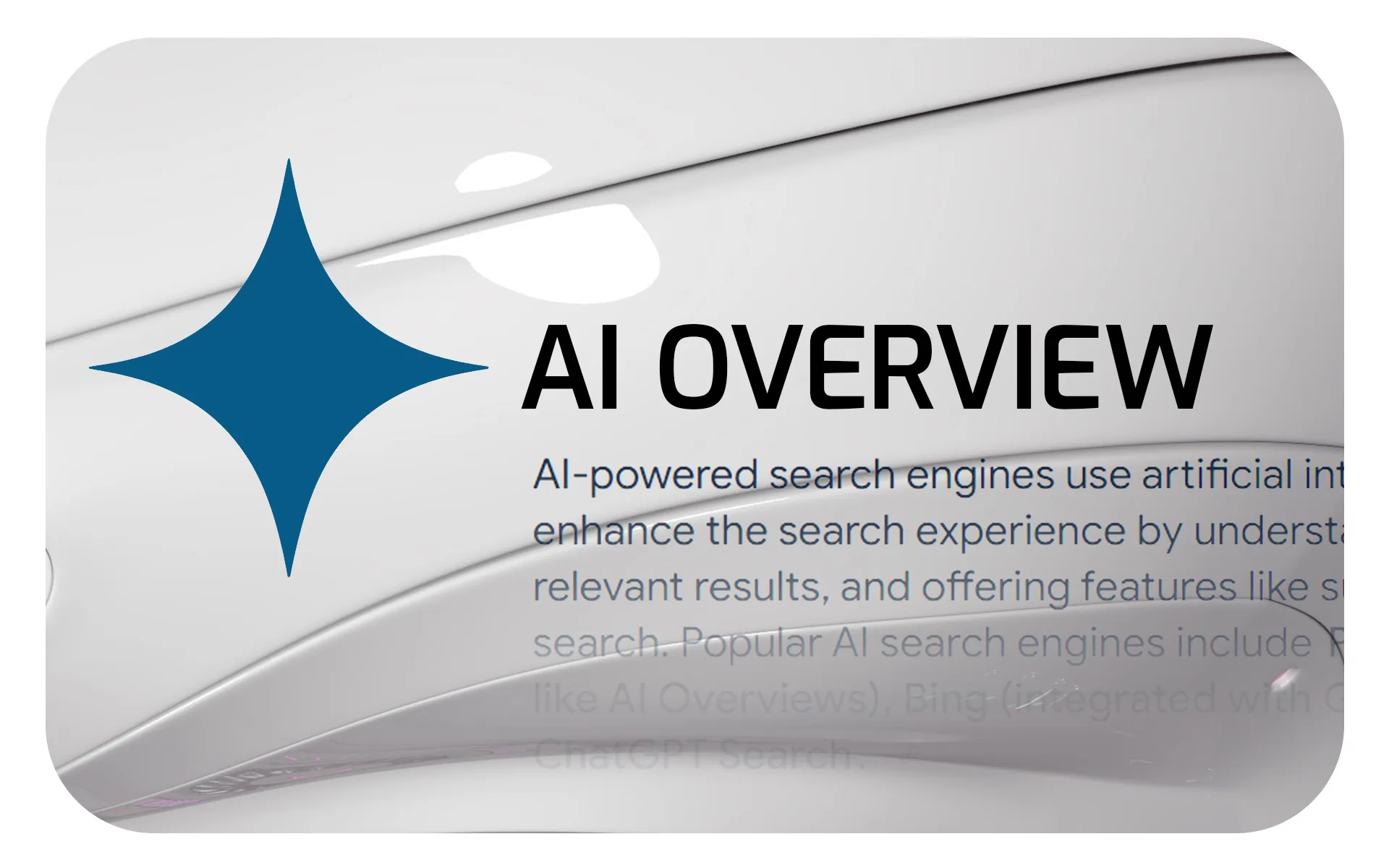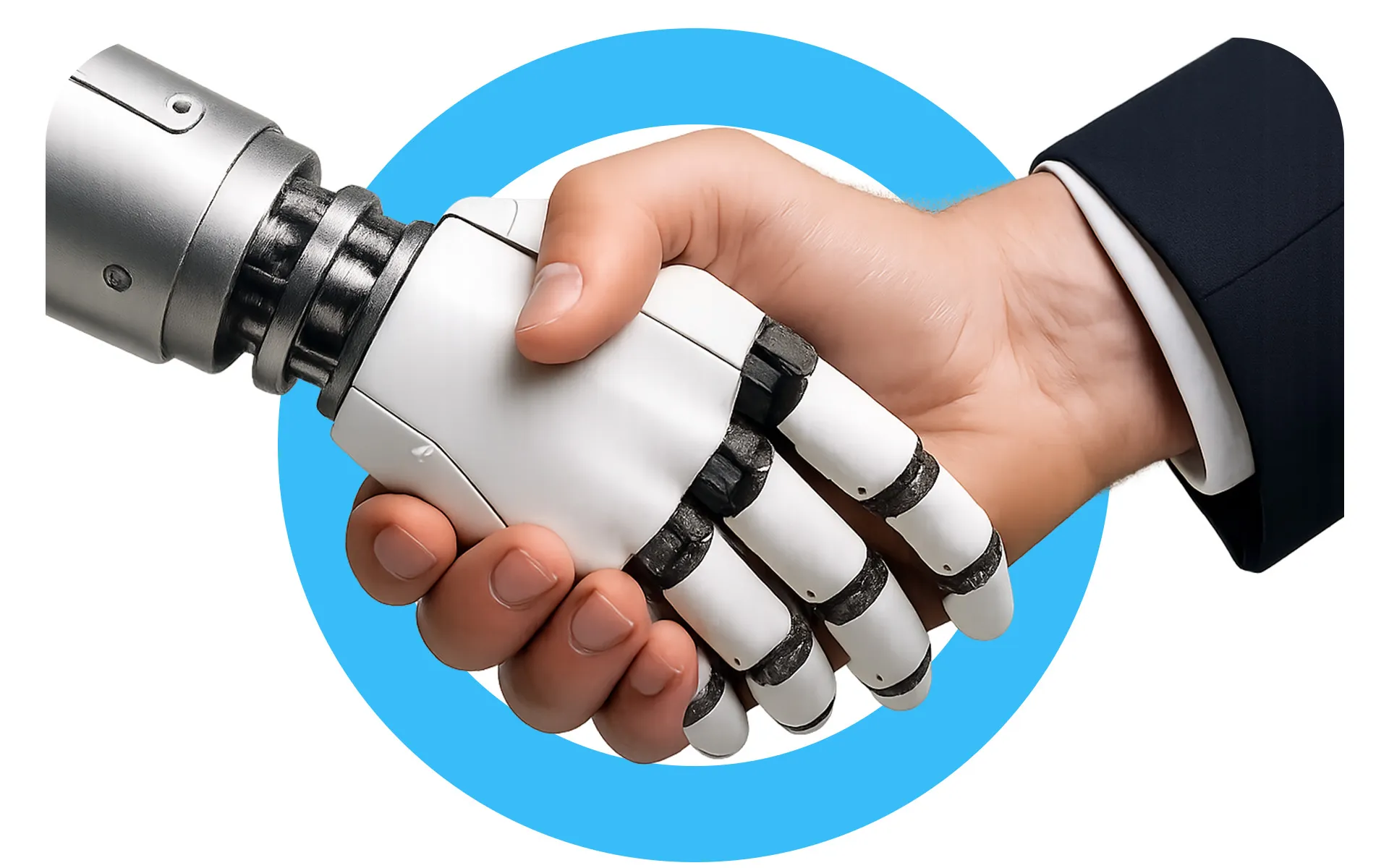read
Here's a striking reality check: 95% of companies now use generative AI, only 35% of consumers do. This massive gap between what businesses think is happening and how people actually behave is reshaping everything about content discovery.
Your click-through rates are dropping. Your organic traffic patterns look weird. Your content isn't showing up where it used to. Sound familiar? You're experiencing the biggest shift in how people find content since Google first launched.
Here's what's really happening: consumers are using AI tools to get answers, but they're using them completely differently than you probably think. This guide breaks down six crucial changes in how people discover content today, plus practical steps you can take to stay visible and competitive.

The Zero-Click Search Problem: Where Your Website Traffic Went
Zero-click searches are taking over. People get their answers straight from AI-powered search results without ever clicking through to your site. This isn't a temporary blip - it's the new normal.
Why AI Overviews Are Killing Your Traffic
Think of AI search overviews as digital assistants that answer questions before users need to visit websites. But here's the problem: 34% of AI crawler requests hit 404 errors or other technical issues. Most businesses aren't even technically ready for AI to find their content.
The numbers get worse: AI crawlers are 47 times less efficient than regular crawlers like Googlebot. While AI systems become the gatekeepers of information, they can't even access most content properly.

Quick Technical Fixes You Need
Clean up your HTML structure so AI can read it
Update robots.txt files to allow AI crawlers
Create llms.txt files for better AI access
Fix broken pages that return errors to crawlers
If you're using digital analytics to track performance, understanding these technical basics is critical for staying visible in AI search.
The Real Solution to Dropping Click-Through Rates
Here's the game-changer: web mentions matter more than anything else for AI visibility. Ahrefs found that if you're in the bottom 50% for web mentions, you're basically invisible to AI. Web mentions have a 0.664 correlation with appearing in AI overviews - that's huge.
This completely flips traditional SEO on its head. Instead of obsessing over keyword rankings, smart businesses focus on:
Your New Priority List:
Getting mentioned everywhere - Build discussions about your brand across authoritative sites
Branded anchor text - Move beyond generic "click here" links to branded mentions (0.527 correlation)
Direct brand searches - Run campaigns that get people searching for your brand name (0.392 correlation)
The Bottom Line:
Traditional SEO rankings don't guarantee AI will find you
Web mentions predict AI visibility 47% better than backlinks do
Businesses in the top 25% for web mentions get into AI results 3x more often
This shift impacts your PPC management strategies too - paid visibility becomes more important when organic discovery goes through AI filters.
How People Really Use AI to Find Content
Consumer behavior with AI tools is way more complex than most businesses realize. The gap between adoption and satisfaction tells the real story.

ChatGPT Usage: High Adoption, Mixed Results
75% of people have used ChatGPT or similar AI tools, so consumers definitely know these tools exist. But here's the catch: only 34% find AI chatbots actually helpful, while 44% say they need major improvements.
That's a massive opportunity gap. More than 20% of users find AI interactions annoying or time-consuming. If you can bridge this gap, you'll stand out from competitors who assume AI adoption equals satisfaction.
How Search Behavior Has Changed:
Old-School Search | AI Prompts | What Users Actually Want |
|---|---|---|
"best CRM software" | "I need a CRM for a 50-person sales team with Salesforce integration" | Specific, contextual recommendations |
"digital marketing agency" | "Find me a UK agency that specializes in PPC for B2B SaaS companies" | Exact expertise matching |
"SEO tips" | "How do I optimize my e-commerce site for voice search in 2025?" | Step-by-step implementation guides |
This change matters for your paid social media services because AI-driven discovery rewards detailed, contextual content over broad keyword targeting.
Voice Search: The Quiet Game-Changer
Voice search is quietly becoming huge. Storyblok research shows 24% increased engagement with voice search as AI search engines push people toward more natural, conversational interactions.
When people talk to AI, they use complete sentences and ask follow-up questions. Your content needs to match this conversational style, not traditional keyword-stuffed approaches.
Voice Optimization Action Plan:
Write content that answers full questions, not just keywords
Add FAQ sections with natural language questions
Focus on local and contextual queries
Structure content to handle follow-up questions
What Content Actually Works in the AI Era
Recent research flips everything you think you know about AI vs. human content on its head. When people read two articles without knowing which was which, 56% preferred the AI-written version.
This preference pattern shows consumers care about different quality markers than marketers assume. They found AI content more engaging, despite worrying about authenticity.
Detection rates vary by location: 55% of US readers correctly spotted AI copy, compared to 45% of UK consumers. Your content strategy might need regional tweaks based on local AI awareness.
Why People Prefer AI Content:
Better structure - AI follows consistent formatting that's easier to scan
Complete coverage - AI addresses topics more systematically
Less bias - AI content feels more objective to readers
Consistent quality - AI maintains the same quality level across all topics
The challenge? 26% of people would think your brand is impersonal if content doesn't feel human-written. You need to balance efficiency with authentic voice.
The Trust Challenge: Why Personalization Expectations Are Changing
Consumer attitudes toward AI in marketing reveal a complex trust landscape. People want AI benefits but have specific conditions about how brands use it.
Building Trust Through Honest AI Use
81% of consumers are open to AI-powered personalized recommendations, showing broad acceptance of AI in marketing. But there's a big "however": 44% say they're open to AI recommendations, but "it depends on the company".
This conditional acceptance creates huge opportunities for agencies and businesses that demonstrate trustworthy AI use. The key differentiator is your company's reputation and how transparently you communicate about AI.
Building Trust Framework:
Lead with transparency - Be upfront about how you use AI
Tailor by brand - Adjust AI approaches based on your brand's trust level
Address the "depends" factor - Proactively handle conditional acceptance
Leverage existing trust - Use established relationships to introduce AI capabilities

Balancing Efficiency with Human Touch
The authenticity challenge goes beyond content to overall brand perception. 26% would feel your brand is impersonal if copy doesn't feel human-written, and 20% would think you're lazy. For social media, the stakes get higher: 25% would feel impersonal, 20% untrustworthy, 20% lazy, and 19% uncreative.

Your Authenticity Checklist
Keep your brand voice - Make sure AI content still sounds like your brand
Identify human-only touchpoints - Know where human interaction is essential
Quality control systems - Review all AI-generated content before publishing
Brand consistency - Ensure AI content matches your established voice
Consider disclosure - Decide if/how to tell people about AI-assisted content
This balance becomes especially important for Microsoft Bing Ads and other platforms where AI-generated ad copy must maintain brand authenticity while optimizing for performance.
Strategic Frameworks for Winning in AI-Driven Discovery
Traditional SEO is evolving fast to keep up with AI-powered search. You need new frameworks that address both algorithm changes and shifting consumer behaviors.
GEO: The New SEO for AI Era
Generative Engine Optimization (GEO) is fundamentally different from traditional SEO. ToTheWeb identifies 14 specific techniques for making your content work with AI platforms like ChatGPT, Claude, and Gemini.
Old SEO vs. New GEO:
Traditional SEO Focus | GEO Focus |
|---|---|
Keyword density | Semantic clarity |
Backlink authority | Context richness |
Page rankings | AI readability |
Search engine algorithms | AI comprehension |
Technical optimization | Structured data for AI |
GEO focuses on semantic clarity, rich context, and AI readability to make sure AI systems can understand and recommend your content. You need to think beyond ranking factors toward comprehensive, well-structured information that AI can easily process.
Your AI Visibility Strategy
Early AI optimization efforts show real results. Convert.com reports a massive 2200% increase from AI sources in 2024 compared to the previous year. That's not a typo - businesses adapting to AI-driven discovery see dramatic traffic increases.
Your 90-Day Action Plan:
Days 0-30: Foundation
Audit how visible you are across AI platforms right now
Fix technical issues preventing AI crawlers from accessing your site
Identify your highest-priority content for AI optimization
Days 30-90: Development
Create AI-optimized content using GEO principles
Build web mention strategies to increase brand visibility
Set up tracking systems for AI-driven traffic
Days 90+: Scale
Refine content based on AI performance data
Scale what's working across more content
Integrate AI optimization with your broader marketing strategy
The timeline makes sense when you considera 43% of brands are still just monitoring trends, 38% are investing in technology, 30% are partnering with providers, and only 29% are training staff. Taking action now gives you competitive advantages over companies still in "wait and see" mode.
For Amazon Ads and other platform-specific strategies, understanding AI-driven consumer behavior becomes crucial for maintaining competitive positioning as search patterns continue changing.
How Optimum Click Helps You Navigate AI Disruption
Understanding these trends is just step one. Actually implementing changes requires expertise, strategic planning, and ongoing optimization. The complexity of balancing traditional marketing with emerging AI discovery patterns demands specialized knowledge and proven frameworks.
Our 7 years of turning data into measurable results positions us uniquely to help you navigate this transformation. We've developed comprehensive strategies addressing each critical trend reshaping content discovery.
Our AI Adaptation Services:
AI Visibility Audit - Complete assessment of your current presence across AI platforms and search features
GEO Implementation - Strategic content optimization using Generative Engine Optimization for maximum AI discoverability
Web Mention Strategy - Systematic approach to building brand mentions that correlate most strongly with AI visibility
Technical AI Setup - Ensuring your website infrastructure supports AI crawlers and content parsing
Performance Tracking - Advanced analytics implementation to track AI-driven traffic and conversions
For Marketing Directors worried about ROI in this shifting landscape, we provide board-ready reporting that clearly shows the impact of AI adaptation strategies. Our approach addresses the 95% company adoption vs. 35% consumer usage gap by focusing on actual consumer behavior, not assumptions.
Ready to stop wondering if your marketing actually works in the AI era? Contact Optimum Click to see how your current strategy measures up and discover what opportunities you're missing in AI-driven content discovery.
FAQ
Conclusion
The gap between business AI adoption and consumer usage patterns represents both your biggest challenge and your greatest opportunity. While 95% of companies use generative AI, only 35% of consumers have adopted these tools - but those consumers are fundamentally changing how content gets discovered.
Companies that thrive will move beyond monitoring trends to implementing strategic frameworks that address real consumer behavior. From building web mentions that correlate with AI visibility to creating content that serves both humans and AI systems, success requires comprehensive approaches balancing traditional marketing with emerging AI discovery patterns.
The evidence is clear: companies like Convert.com see 2200% increases from AI sources, while businesses invisible to AI risk losing relevance entirely. Your window for competitive advantage narrows as more organizations recognize AI optimization's importance.
Act now rather than plan extensively. Audit your current AI visibility, implement technical requirements for AI access, and start building web mentions that drive AI discovery. Consumers already use AI to find solutions - the question is whether they'll find you.
Partner with Optimum Click to navigate this transformation strategically, turning consumer behavior challenges into measurable business growth. The future belongs to businesses that understand AI and content consumers - let's make sure you're leading rather than reacting to this fundamental shift in digital discovery.


![AI Advertising in 2025: Real ROI vs Expensive Hype [Guide]](/_ipx/f_webp/img/blog/blog-ai-in-the-advertising-space.jpg)
